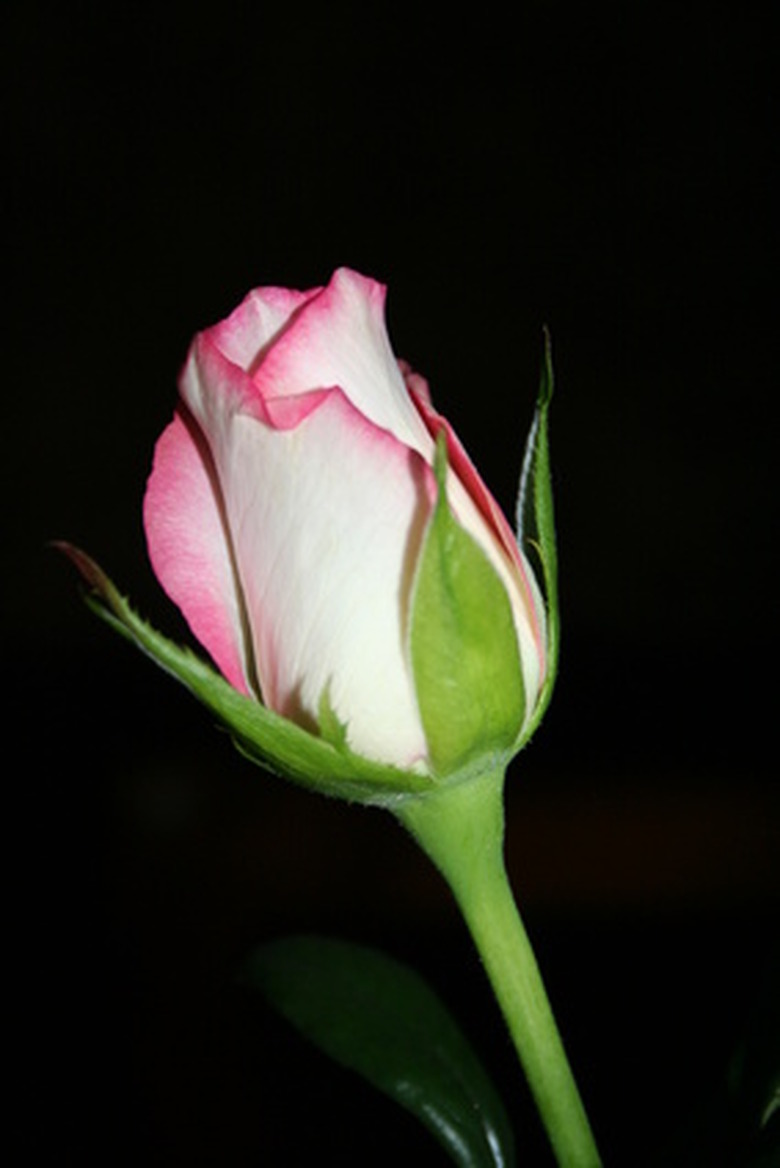How To Keep Rose Blooms From Turning Brown
Rose blooms turning brown before they have a chance to open is a common garden problem, and one that can frustrate gardeners to no end. There are several reasons for your roses turning brown, and several steps your can take to try to prevent it. If a rose bush already has some brown blooms, minimize the chances of other blooms getting infected too.
Step 1
Keep the soil around your roses moist but not saturated at all times. If the soil is too dry, your rose could develop drought stress, resulting in brown rose blooms.
Step 2
Spread a layer of compost around each rose bush regularly, two or three times a year.
Step 3
Fertilize your roses bushes with a rose fertilizer, carefully following the directions on the package on how much to apply and how often.
- Rose blooms turning brown before they have a chance to open is a common garden problem, and one that can frustrate gardeners to no end.
- Keep the soil around your roses moist but not saturated at all times.
Step 4
Check your rose buds once a week for signs of aphids or thrips, minuscule creatures that wreak havoc on rose blooms.
Step 5
Spray your rose bushes with a water hose at the first sign of insect infestation. A sharp spray of water will knock the insects away, according to AllAmericaRoseSelections.org.
Step 6
Apply insecticidal soap to your roses after watering, following the directions on the bottle.
Step 7
Immediately remove rose blooms that have brown tips or brown spotting. These symptoms are often a sign of Botrytis blight, a fungal disease that is very easily spread.
Step 8
Spray remaining buds and canes with a fungicide, available at garden centers and home improvement stores. Follow the directions on the bottle.
- Check your rose buds once a week for signs of aphids or thrips, minuscule creatures that wreak havoc on rose blooms.
- Apply insecticidal soap to your roses after watering, following the directions on the bottle.
Rose Tree Turning Brown All Of Sudden?
bloom in many colors, but brown shouldn't be one of them. Hardiness is usually based on the flower that forms the crown of the tree rose. With most roses suitable for U.S. Department of Agriculture plant hardiness zones 4 or 5 through 9 or 10, depending on cultivar, be sure to pick one based on growing conditions in your area. Move a potted tree rose to a breezier area and prune away dead or dying flowers and buds down to healthy tissue; use pruners that you clean with rubbing alcohol or household antiseptic cleaner before and after you cut. Removing the pruned tissue and any other plant debris from around the rose tree helps prevent reinfection. When you see brown leaves on your rose tree, you are usually the problem. Forgetting to water, over-fertilizing a container plant, damage from herbicides or planting where the standard rose is exposed to too much heat or cold can all result in leaves that are brown at the edges or fully brown. Prune out and destroy infested canes.
- bloom in many colors, but brown shouldn't be one of them.
- Forgetting to water, over-fertilizing a container plant, damage from herbicides or planting where the standard rose is exposed to too much heat or cold can all result in leaves that are brown at the edges or fully brown.
Things Needed
- Compost
- Rose fertilizer
- Water hose with spray nozzle
- Insecticidal soap
- Garden clippers
- Fungicide
Tip
Beetles are harder to control than smaller pests, and you won't realize they are there until after the rose bloom turns brown and assumes a deformed shape. In those instances, clip off the blooms and dispose of them.
References
- All-America Rose Selections: Troubleshooting Disease
- Rose Gardening Made Easy: Rose Diseases
- Northern California/Nevada/Hawaii District of the American Rose Society: Tree Roses, Standards or Topiaries
- Fine Gardening: Genus Rosa
- UC IPM Online: Botrytis blight—Botrytis Cinerea
- Marin Rose Society: Garden Bad Guys – Botrytis
- Marin Rose Society: Garden Bad Guys – Abiotic Disease
- UC IPM Online: Roses: Diseases and Abiotic Disorders
- Oregon State University Pacific Northwest Pests Handbooks: Rose (Rosa spp.) and Hybrids-Bacterial Cane Blight
- Marin Rose Society: Garden Bad Guys – Cane Borers
